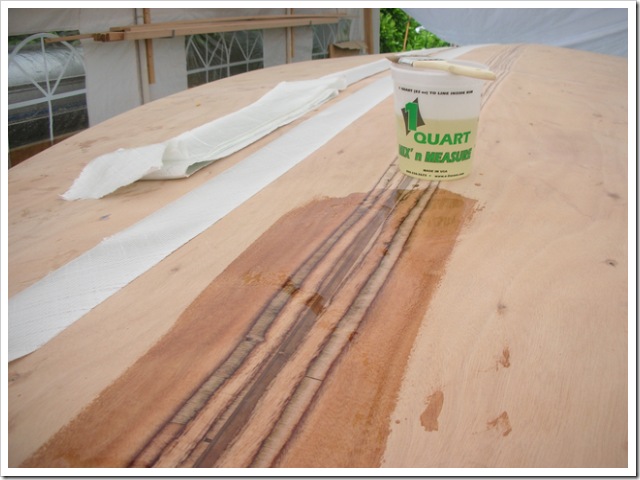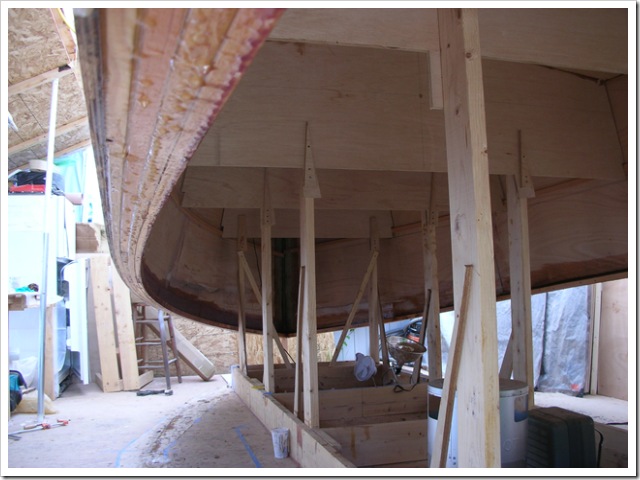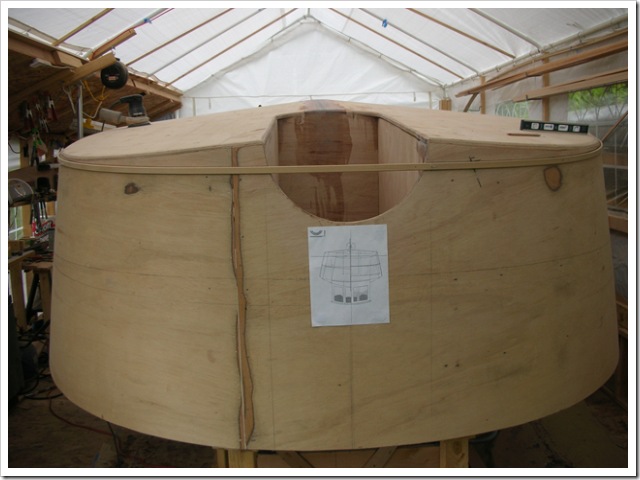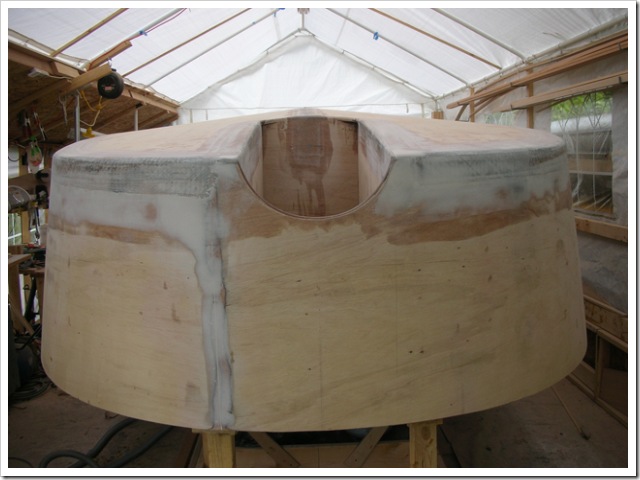After a week of preparation I completed the glassing in a single long day of work. I finished the last filler coat just after midnight Sunday night. I’m very pleased with the results. Aside from a few bubbles and runs the surface is smooth and fair. I did the bottom in two long strips and the sides in a single long piece wrapped around from the bow.
Starting the side glassing at the stern. You can see the epoxy from the bottom sheathing bleeding through the new layer. The bottom epoxy got very tacky half way through and made if very difficult to pull out the wrinkles as I applied the sides. Before I discovered the painting hood I had to cut out chunks of hair after every glassing episode. The coveralls are from an auto body shop. The front is waterproof ripstop nylon and the back is thin cotton. They last a lot longer than the Tyvek ones from the hardware store. The gloves are from the same store and are extra heavy and long to keep epoxy off my wrists.
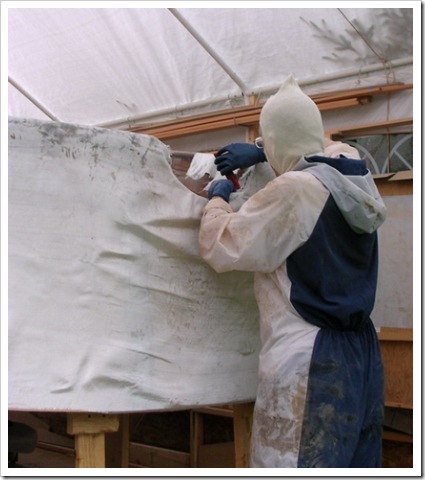
After the glass but before the first fill coat. The flat effect is from squeegying out the excess epoxy to bind the cloth tightly to the hull.

The additional coats of epoxy filled the glass weave well and left the finish pretty glossy. Now I need to wash it down to remove the amine blush and start sanding and fairing.


